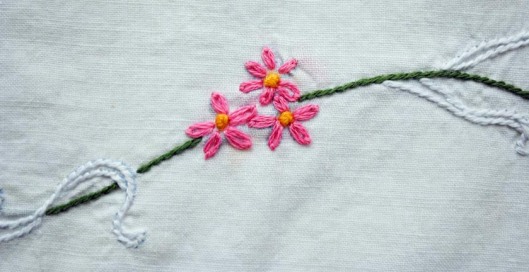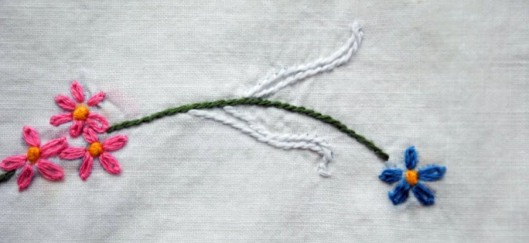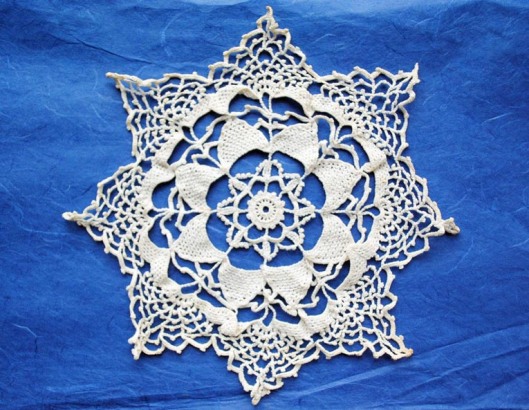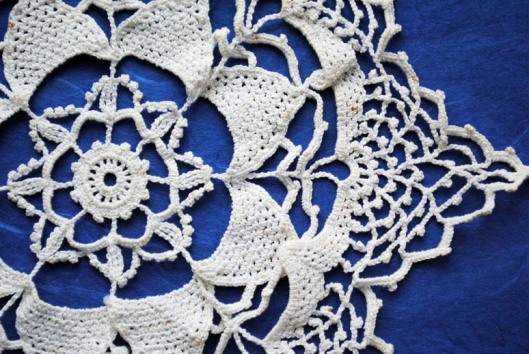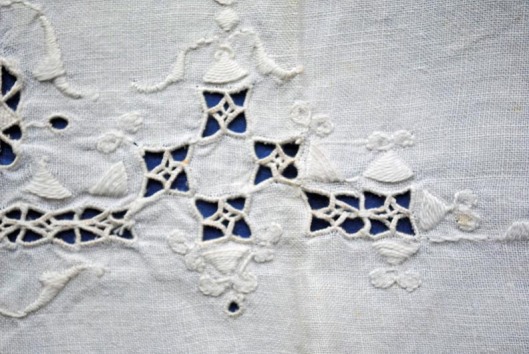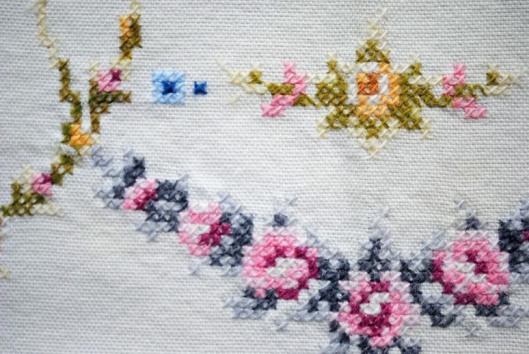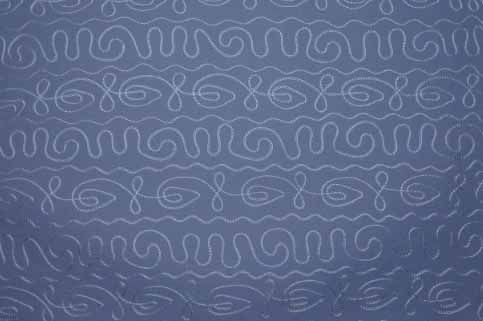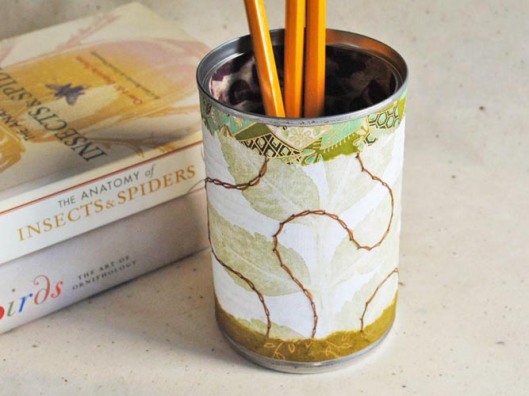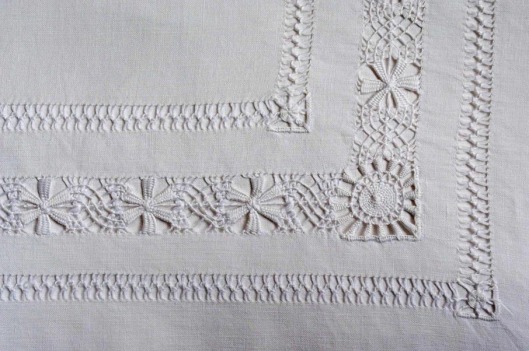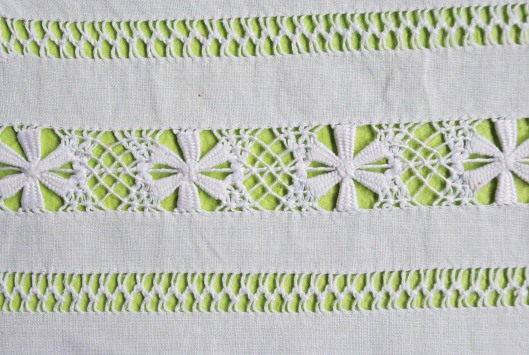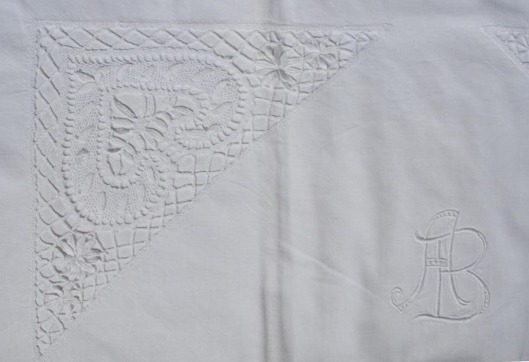A few months ago, I posted a story about my grandmother Oma’s needlework (you can find it here). My mother then decided to give me almost all of Oma’s embroidery, except for the tablecloths we still use for Christmas dinner.
I don’t know anything about embroidery so I can’t discuss the techniques, but I find the work so beautiful that I decided to post photos. Some are embroidered tablecloths or runners, a few are place mats, and one is a pillow case. If anyone would like to shed light on the techniques, I’m all ears.
The history of embroidery isn’t at all what you’d expect. Once upon a time, in about 3,000 BC, embroidery was a man’s task. In ancient cultures around the world, it was taught to talented boys, who studied under masters in 10-year apprenticeships. 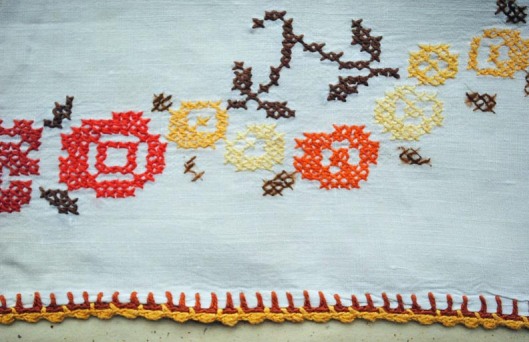
It’s possibly one of the first forms of art, evolving in every part of the world where people practiced sewing, every region developing its own specific styles which were passed on through generations. 
This, of course, is how my grandmother learned the art, as part of her domestic education at school. At that time, her abilities had real value. They were an important part of being considered a desirable wife (she married in 1930), just one of the many domestic skills required to run a successful household at that time.
In the 20th century, as industry advanced, allowing needlework and other household tasks to become mechanized, society changed, and along with it, the expectations that society had of women and that women had of themselves. The value of handmade needlework began to dimish.
Today, the ability to do needlework has lost its value, and computers have taken over the task. Hand embroidery is considered a craft or hobby, two words that belittle the beauty and delicacy of this lost art, and downplay the extraordinary skill and patience required to create works composed of such minute detail. Needlework has executed a functional backflip, from a basic, essential skill for women of all classes to a practice enjoyed by those who have the luxury of time.
But of course everything evolves, and although needlework is no longer a part of everyday life for most of us, embroidery continues down new and intriguing paths. The art of embroidery has been appropriated by fine artists, who employ both hand stitched and computer generated techniques in their work.
If you’d like to see some interesting fine art, check out these artists:
Richard Saja, who embroiders scenes onto toile fabric.
Cindy Steiler, who creates embroideries framed in vintage and antiqued hoops.
Jenny Hart, who draws with needle and thread.
I’ll finish with my all-time favorite tablecloth from Oma’s stash. No matter how much I look at her work, it always knocks my socks off.
The yellow blossoms are each about 2 inches/5cm wide. The immaculate, evenly spaced little stitches are almost invisible.
Nothing less than perfect!





